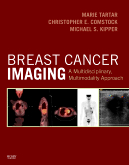Chapter 1: Screening for breast cancer in asymptomatic patients by Chris Comstock, MD and Marie
Tartar, MD
Case 1: Breast cancer presenting as a small new mass on mammography Case 2: Breast cancer
presenting as a new mass on mammography Case 3: Breast cancer presenting as a new spiculated mass
on mammography Case 4: Breast cancer presenting as a small growing mass in the axilla Case 5: IDC
presenting as a small growing mass Case 6: Small growing breast cancer presenting as a contour
change on mammography Case 7: Breast cancer presenting as a largely obscured mass in dense breast
tissue Case 8: Slowing growing microlobulated colloid carcinoma (benign looking growing mass) Case
9: Breast cancer presenting as a new posterior mass on mammography: importance of inclusion of
posterior breast tissue on mammography Case 10: DCIS presenting as a microcalcification cluster
Case 11” DCIS presenting as multiple microcalcification clusters along a ductal ray Case 12:
Breast cancer presenting as architectural distortion in extremely dense breasts Case 13: ILC
presenting as growing amorphous density Case 14: Small cancer in implant patient, well seen only on
implant displaced views Case 15: Importance of complete work-up of new mammographic masses Case 16:
MRI high risk screening for occult breast cancer Case 17: MRI high risk screening for occult breast
cancer Case 18: Breast cancer presenting as a growing small mass on screening MRI Case 19: CT
identification of unknown breast cancer in an asymptomatic patient Case 20: PET identification of
occult breast cancer in an asymptomatic patient
Chapter 2: Evaluation of the symptomatic patient: Diagnostic breast imaging
Cases: 1. Palpable axillary IDC, presenting as a growing mammographic mass simulating a lymph node
2. Palpable lump presenting as malignant microcalcifications on mammography 3. Palpable IDC
presenting as mammographic architectural distortion and shadowing sonographic mass 4. Palpable ILC
presenting as architectural distortion 5. Palpable lump presenting with masses and pleomorphic
microcalcifications 6. Palpable lump presenting as mammographic architectural distortion with
microcalcifications 7. Palpable lump presenting as growing amorphous mammographic asymmetry 8.
Palpable lump presenting as developing mammographic density 9. Mammographically occult palpable
breast cancer 10. Large, palpable, mammographically occult invasive carcinoma 11. Breast cancer
involving the nipple-areolar complex, not identified on conventional imaging, demonstrated by MRI
12. Mammographically occult retroaerolar breast cancer presenting as nipple retraction 13.
Importance of clear communication and accurate history; Inaccurate history of biopsy “scar” leads
to near-miss of a spiculated cancer 14. Axillary nodal presentation of breast cancer, primary found
on MRI 15. Axillary nodal presentation of ILC, occult on conventional imaging, primary found by MRI
16. Axillary nodal presentation with negative mammogram, primary found on PET 17. Axillary nodal
presentation with initially negative mammogram, medial primary found on CT 18. Male breast ca 19.
Male breast ca 20. Male breast cancer and gynecomastia 21. Male breast cancer with
microcalcifications 22. Male breast cancer with skin thickening and nipple enlargement
Chapter 3: Local staging: Imaging options and core biopsy strategies By Christopher Comstock, MD
and Marie Tartar, MD
Cases: 1. Mammography: extent of disease 2. Ultrasound: extent of disease 3. Use of US to find
invasive disease within extensive microcalcifications, depiction of disease extent by breast MRI
vs. PEM vs. whole body PET 4. Multi-focal breast cancer, first identified on abdominal CT,
radiologic “corner shot” 5. MRI: extent of disease 6. MRI: extent of disease 7. MRI: extent of
disease (Tip of the iceberg detected on mammography) 8. MRI: extent of disease (Multi-focal
disease, dense breasts) 9. M


